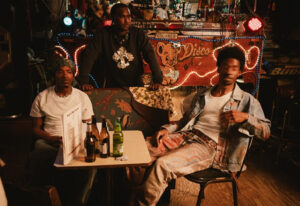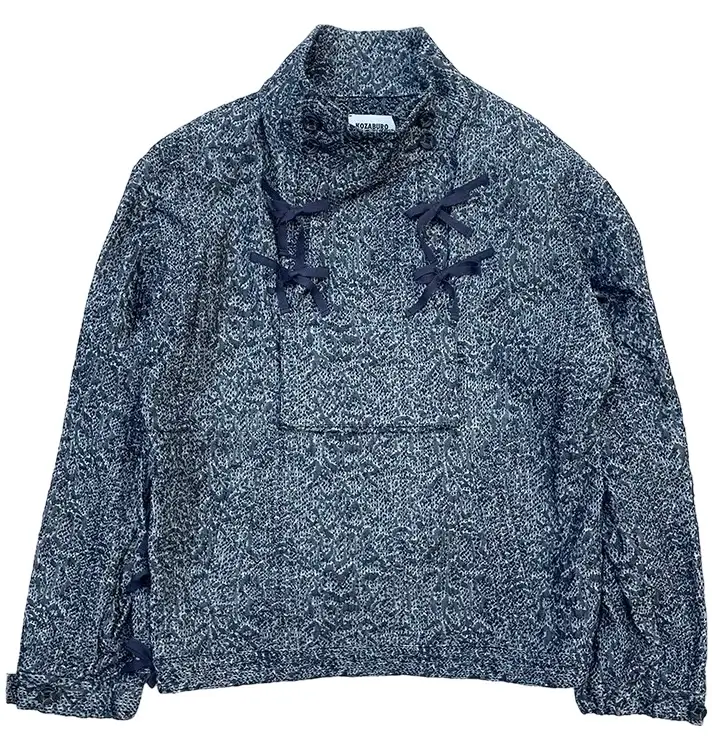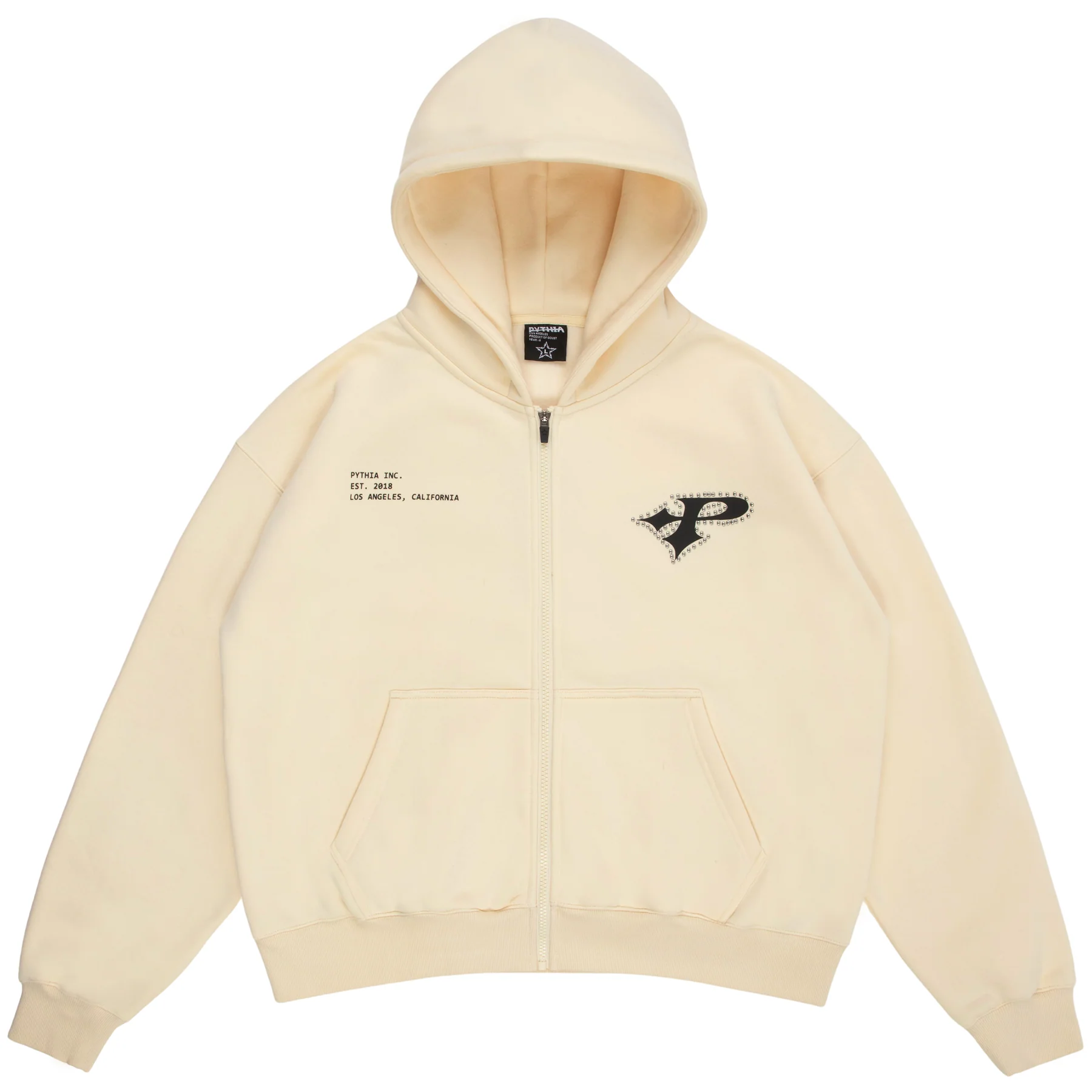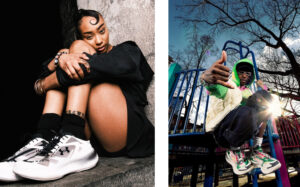In the heart of America’s Deep South, where brass bands play on street corners and history drips from Spanish moss-covered trees, a new fashion story unfolds. Levi’s® and Denim Tears have reunited for their fourth collaborative capsule, this time with an eye on New Orleans, a city steeped in rhythm, resilience, and cultural complexity.
But this isn’t just a celebration of style—it’s a tribute to tradition, particularly the intricate and storied heritage of the Black Masking Indians, also known as the Mardi Gras Indians.
The collection pays homage to the Young Seminole Hunters, a storied tribe within the Black Masking Indian community, and its cultural leader, Big Chief Demond Melancon, a globally recognized artist and figurehead.
Through a thoughtful blend of streetwear and storytelling, the eight-piece collection weaves together legacy, art, resistance, and pride. It doesn’t merely nod to New Orleans—it centers it, amplifying a culture long underrepresented in mainstream American fashion.
Roots in Resistance: Who Are the Mardi Gras Indians?
To understand this collection, one must first understand the Black Masking Indians, often referred to as Mardi Gras Indians. This isn’t a costume or an aesthetic—it’s a sacred tradition, forged in the fire of colonialism, resistance, and creative resilience.
The origins of the Black Masking tradition date back over a century, with African Americans in New Orleans paying homage to the Native Americans who assisted enslaved people seeking freedom. Over time, this solidarity transformed into an annual tradition in which groups known as “tribes” sew ornate, hand-beaded and feathered suits—often taking an entire year to craft—and “mask Indian” on Mardi Gras day, chanting, drumming, and dancing through the streets.
The ceremonial suits are not only a representation of ancestry, but also spiritual armor, each bead and stitch infused with meaning. For Levi’s® and Denim Tears, this tradition provided not only aesthetic inspiration but also cultural instruction: fashion must tell the truth of its sources.
A Capsule Made with Cultural Care
The collection is led by Tremaine Emory, founder of Denim Tears and a creative force known for placing Black American narratives at the center of his work. Emory is not interested in appropriation; he’s focused on collaboration, elevation, and education. In every piece of the Levi’s x Denim Tears drop, we see not just a design, but an act of reverence.
The Photo Trucker Jacket and matching Photo Jeans are among the most striking items in the collection. Each piece is adorned with photographic imagery of members of the Young Seminole Hunters dressed in their ceremonial suits. The images are raw and powerful—draped across denim as if the fabric is bearing witness. These garments reject perfection: each one is intentionally designed with slight flaws and color variations, an ode to the one-of-a-kind nature of the ceremonial attire they honor.
The Photo Trucker Jacket, a slightly cropped evolution of Levi’s Type III denim jacket, boasts a relaxed silhouette, welcoming a modern fit while staying rooted in archival structure. The accompanying 568™ Stay Loose jeans reinforce this balance between past and present, featuring a wide-leg, easygoing shape that pays homage to 1990s hip-hop aesthetics while anchoring itself in a contemporary cultural moment.
French Influence and Southern Soul
New Orleans is not a monolith; it is a mélange of cultural influences—French, African, Caribbean, Spanish, and Native American—that have shaped its food, language, and style. This blend is visible in the collection’s Track Jacket and Track Pants, both dyed in a medium indigo wash and accented with deep navy panels and fleur-de-lis motifs.
The fleur-de-lis, long associated with French monarchy and later with Louisiana’s identity, is recontextualized here with gold piping along seams, echoing the regalia of marching bands that parade through the city during Mardi Gras and beyond.
There is something ceremonial and everyday in these pieces. They don’t scream luxury, nor do they attempt to sanitize or aestheticize the cultural cues—they respect them, embedding them into garments that move with the rhythm of the streets they reference.
The Crewneck Sweatshirt, washed in muted black, continues this motif with a more understated approach. The gold fleur-de-lis sits like a crest, symbolic yet soft, calling to mind both rebellion and reverence.
Paired with the Baseball Tee, which melds gingham floral patterns and dark green sleeves, we’re reminded of Southern family picnics, kitchen tables, and the tactile joy of everyday textiles. These are clothes you can wear—and remember in.
Accessories with Intention
The capsule’s accessories extend the conversation. A medium indigo durag printed with floral motifs and a photo-print cap round out the offering. Like the rest of the collection, these pieces are designed with intentional imperfections—symbolizing the human hand, the thread of culture, and the notion that no two stories, like no two suits, are ever the same.
In an era where fashion often leans into mass replication and polish, this emphasis on imperfection is revolutionary. It rejects fast fashion’s homogenization and insists on a more human approach—one that acknowledges that real culture is lived, flawed, stitched with memory.
A Campaign Grounded in Community
Just as vital as the garments themselves is the campaign that brings them to life. Rather than staging a high-gloss shoot in a studio or renting out glossy fashion locations, the Levi’s x Denim Tears team chose to photograph the collection in New Orleans, featuring actual members of the Young Seminole Hunters.
The campaign does not exoticize the community—it includes it, elevates it, and credits it. The Young Seminole Hunters are not simply muses—they are partners, participants, and protectors of the traditions the collection uplifts. In each shot, the authenticity of place and people is palpable.
Big Chief Demond Melancon himself, known both for his leadership in the tribe and for his internationally exhibited beadwork, is central to this effort. His presence is a seal of cultural integrity, a reminder that these suits—and this collaboration—are living history.
Fashion as Cultural Dialogue
This capsule is not simply a style statement. It is an offering—a cultural dialogue in denim and cotton, mediated through years of legacy, struggle, and survival. For Emory, this fourth collection with Levi’s is part of an ongoing conversation: how can fashion serve as a medium for remembering, for honoring, and for changing what we understand about American identity?
It’s a question Emory has asked before—through collections that reference cotton fields, jazz icons, and the African diaspora. But here, in the streets and spirit of New Orleans, he finds perhaps his most visceral and textured canvas yet.
This isn’t just Black fashion. It’s Black folklore in fabric.
The Power of Local Storytelling in Global Fashion
In a globalized industry that often strips cultural signifiers of their context, Levi’s x Denim Tears presents an alternative blueprint—one that centers locality, specificity, and deep cultural research. New Orleans isn’t used here as a backdrop. It is the protagonist.
This approach signals a shift in what modern collaborative collections can be. It’s no longer enough to paste a culturally significant motif onto a t-shirt. Brands must embed themselves in the culture they’re referencing, give voice to the community, and divert attention (and capital) back to the source.
Thoughts
In an industry often criticized for shallow gestures and aestheticized activism, this capsule is a refreshing return to intention. It proves that fashion can be a form of cultural care, that denim can hold memory, and that honoring the past is one of the most radical things a modern brand can do.
Each piece is a witness—to resistance, to joy, to craft, and to continuity. The use of real images, the reverence for handcrafted imperfections, and the direct involvement of the Young Seminole Hunters set this collaboration apart.
No comments yet.









